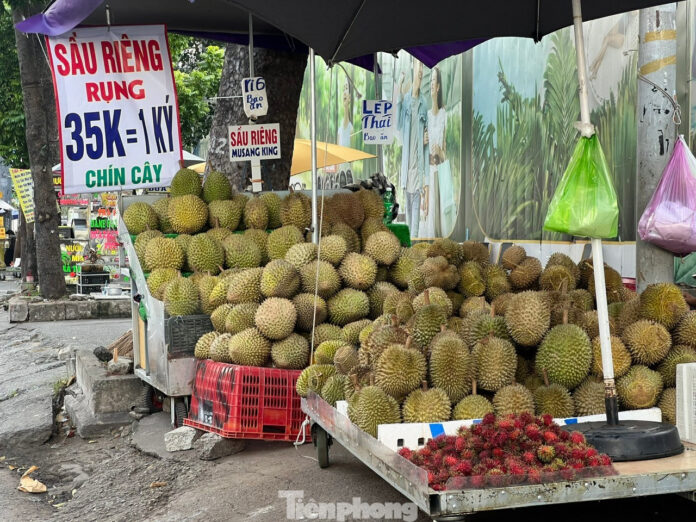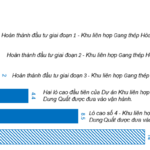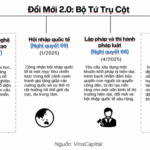Just before noon on August 3rd, along Ba Thang Hai Street in Ho Chi Minh City, numerous makeshift stalls selling durians were set up on the sidewalks. The fruits were piled high, with eye-catching signs advertising, “Fallen durians, tree-ripened, only VND 35,000/kg.” Many passersby were enticed by the affordable price and stopped to make purchases.
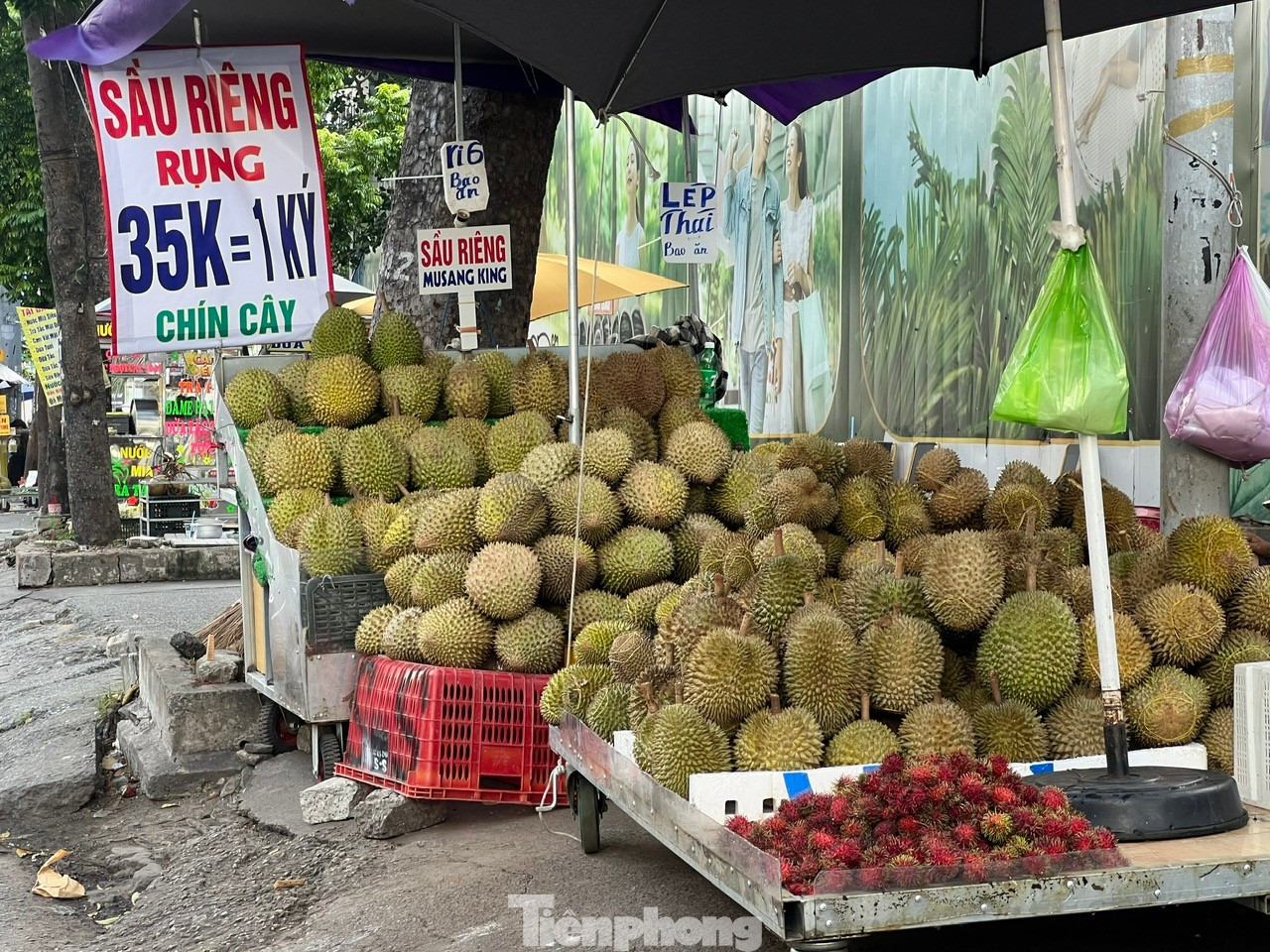
Several durian vendors displayed signs advertising the fruit at VND 35,000/kg on Ho Chi Minh City’s sidewalks
Ms. Minh Trang, a resident of Xuan Hoa Ward, asked the vendor to select four good ones for her. She shared, “Durians are usually quite expensive, so we don’t get to enjoy them often. But seeing this attractive offer, and with a guarantee, I thought I’d give it a try.”
According to Tien Phong newspaper’s observations, the durians priced at VND 35,000/kg were mostly smaller fruits weighing around 800 grams to 1 kilogram, and their varieties were unclear. In contrast, the labeled varieties like Ri6 and Thai lep were still priced between VND 45,000 and 60,000/kg.
The vendors explained, “These are smaller fruits, but they are still tree-ripened and edible. If you open them and find them unripe, bruised, or rotten, bring them back, and I’ll exchange them for you. Guaranteed!”
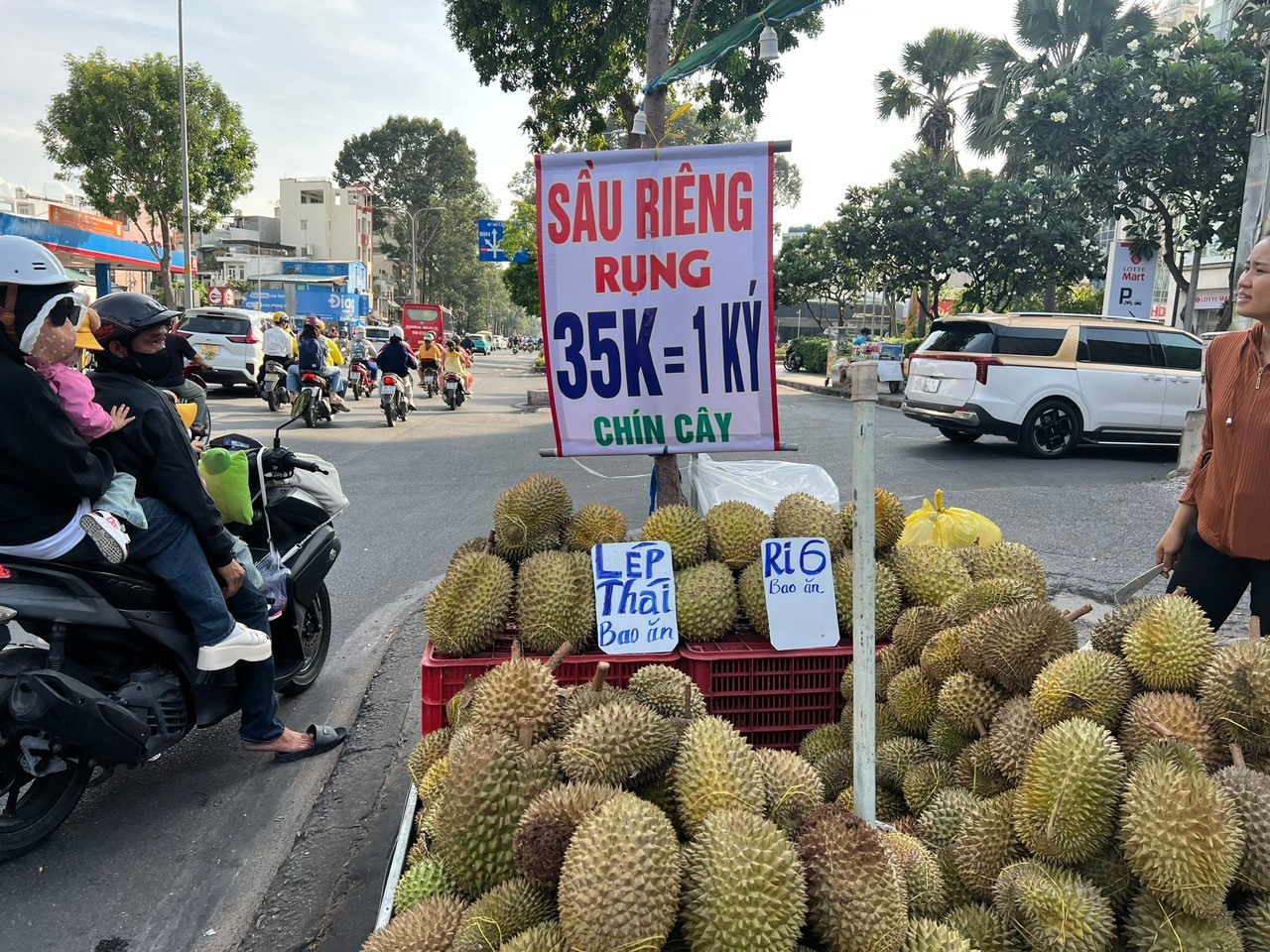
Customers continually stopped by the durian stalls to inquire about the fruit
Not only on the sidewalks, but social media platforms also witnessed a surge in posts offering durians at incredibly low prices, ranging from VND 25,000 to 30,000/kg, with assurances of tree-ripened fruits and exchanges for unsatisfactory ones.
However, the reality fell short of expectations. Ms. Thien An, a resident of Binh Tien Ward, shared her disappointing experience after ordering two durians totaling VND 70,000 online. Upon opening them, she discovered that only one segment had edible flesh, while the rest were unripe. “The edible segment had a large seed, and the flesh was bland and lacked aroma. I bought them because of the low price, but I don’t think I’ll take the risk again,” she said.
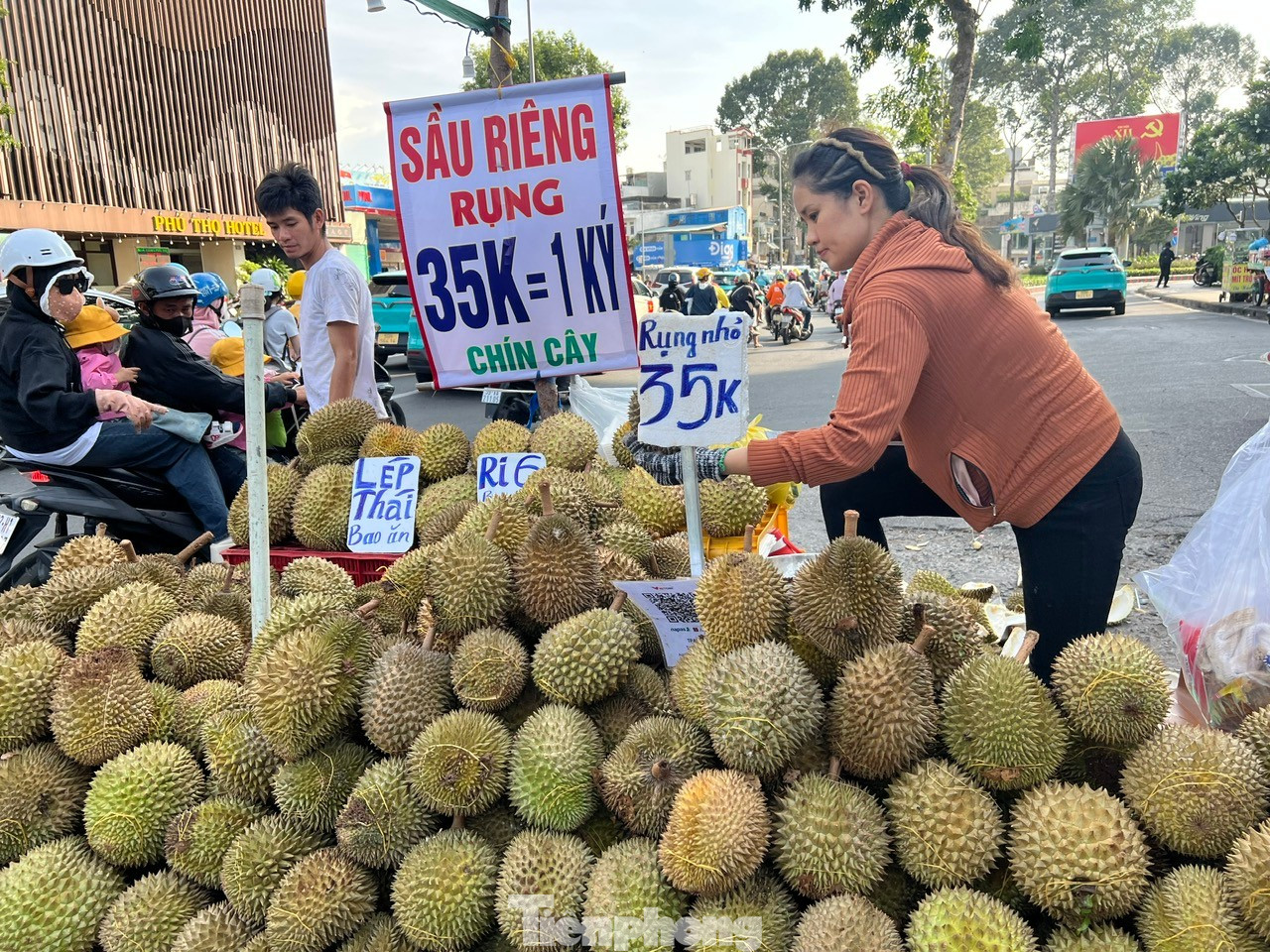
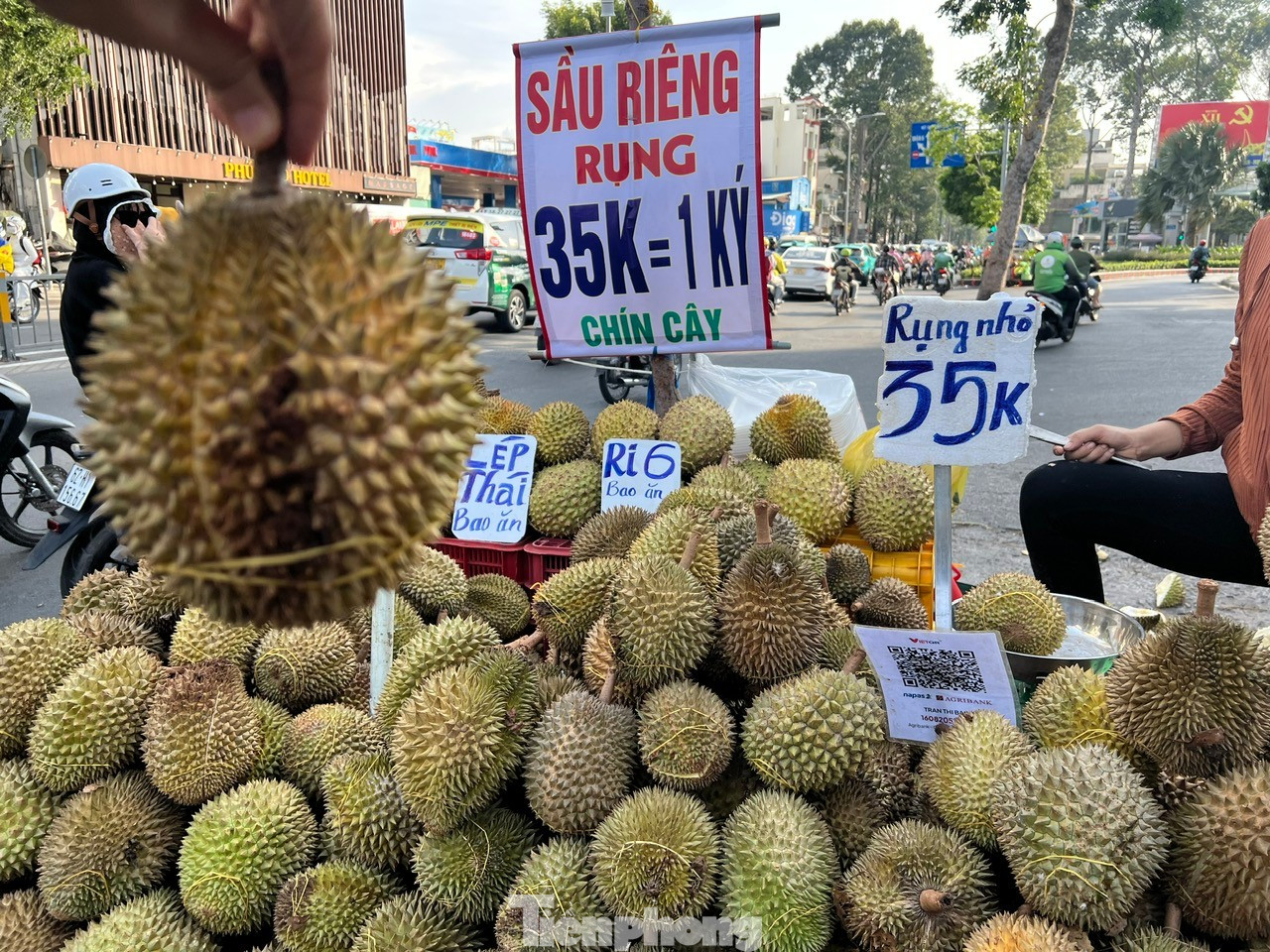
The VND 35,000/kg durians were smaller fruits, separated into a distinct area
In a conversation with Tien Phong newspaper, Mr. Nguyen Van Muoi, Vice Secretary-General of the Vietnam Fruit and Vegetable Association, stated that selling durians at prices ranging from VND 30,000 to 35,000/kg is not uncommon. In reality, these are durians that fail to meet export standards and often have issues like unripe flesh, premature falling, or insufficient quality.
“High-quality durians are currently being purchased by wholesalers at prices ranging from VND 75,000 to 76,000/kg. The ones advertised at VND 30,000 to 35,000/kg, or even lower, are of inferior quality. They are mainly targeted at the lower-end market segment or used for making ice cream and further processing,” Mr. Muoi explained.
He also mentioned that the low prices could be attributed to farmers experiencing a high rate of unripe flesh in their crop, leading traders to buy them at reduced rates. “The fruits may still be tree-ripened, but they fall prematurely, and the flesh quality can vary. Some may be edible, while others are not. Buying these durians largely depends on luck,” he added.
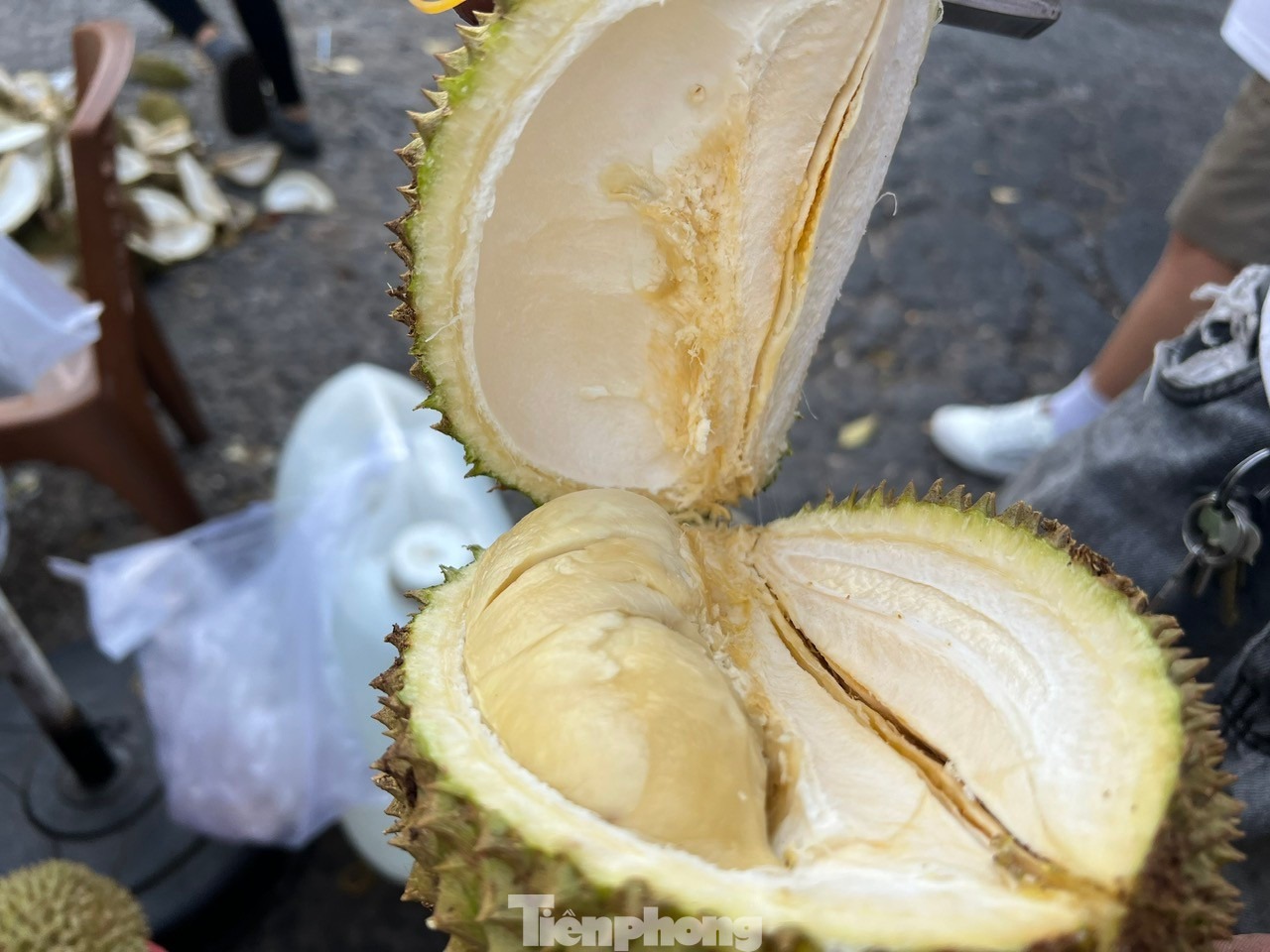
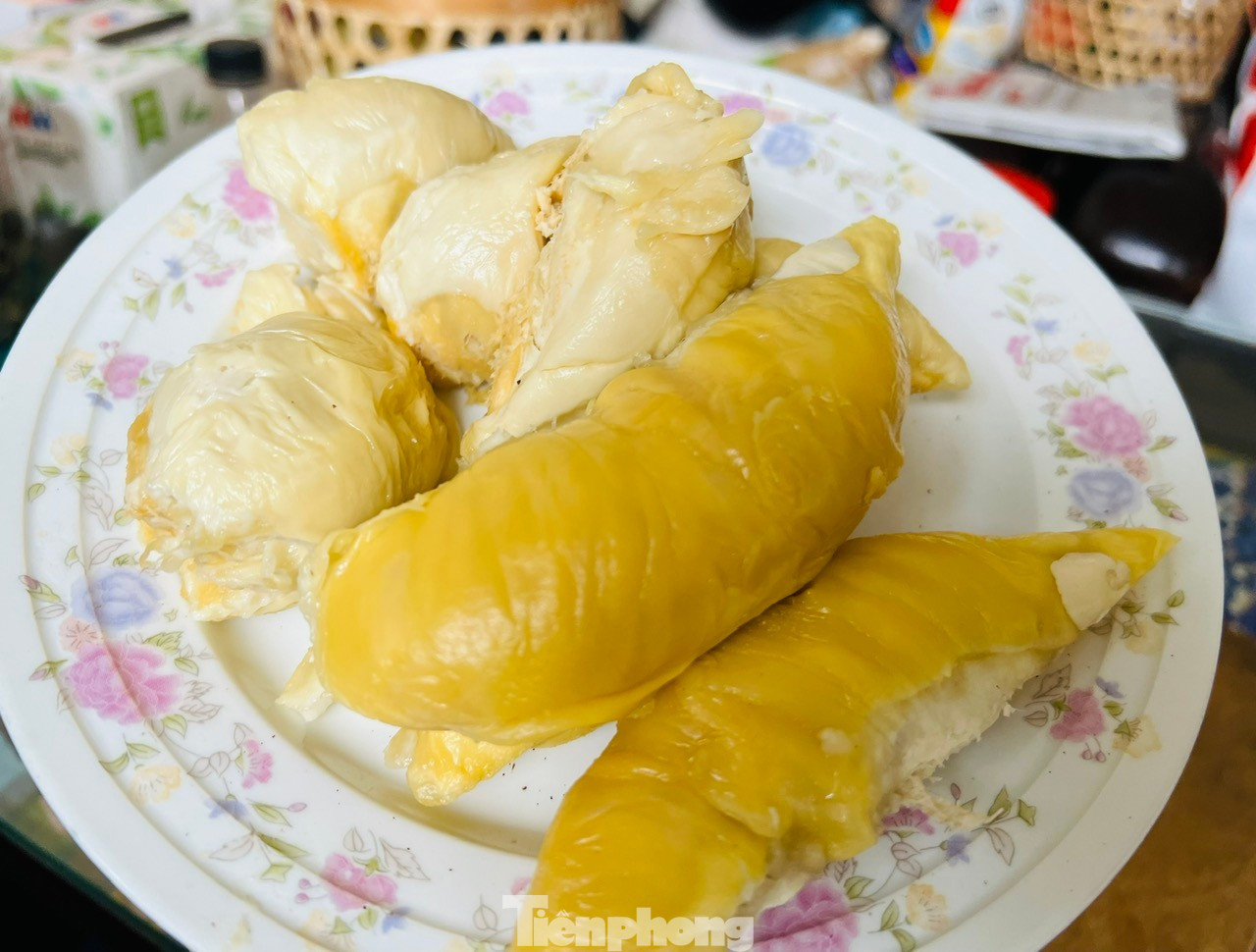
Buying cheap durians often means taking a chance on quality
A concerning issue is the lack of a clear classification system for durians in the market. According to Mr. Muoi, farmers and traders have traditionally relied on subjective assessments or broad categories like grades A, B, and C. However, the price differences between these grades can be significant. For instance, grade A durians can fetch up to VND 80,000/kg, while grade B might be around VND 45,000, and grade C could be as low as VND 20,000/kg. The association has repeatedly proposed the implementation of a classification standard for durians to ensure transparency in their commercial value, protect farmers, and eliminate the subjective nature of the current trading practices.
“Without a clear standard, both buyers and sellers are at a disadvantage. Farmers who produce high-quality fruits may be pressured by traders to accept lower prices. It is essential for the Ministry of Agriculture and Environment to establish and promptly implement quality standards for durians,” emphasized Mr. Muoi.
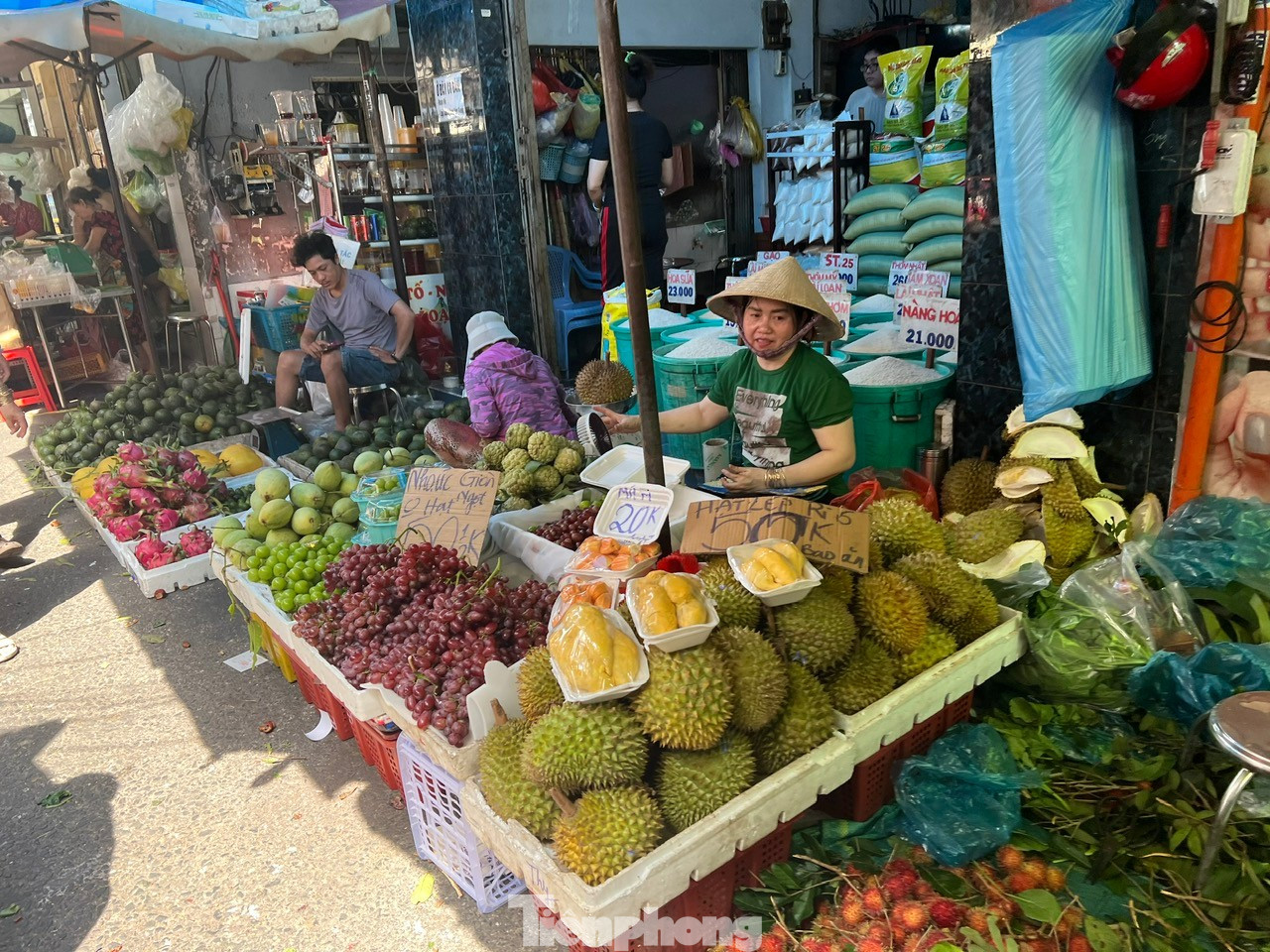
Durians are still available in local markets at VND 50,000/kg, but only a few vendors have them in stock
Agricultural experts revealed that most of the durians currently available in the market originate from the Central Highlands region. Following the seasonal pattern, durians from the Mekong Delta region are typically harvested in May, those from the Eastern region in June, and the Central Highlands region in September. However, due to varying climatic conditions within the Central Highlands region, the harvest timing can differ by up to 40 days.
At local markets in Ho Chi Minh City, while fruit vendors used to offer durians alongside other fruits, only a handful now have them in stock, priced at VND 50,000 to 60,000/kg. “The Mekong Delta durian season has passed, and the Central Highlands region is just beginning its harvest, so the supply is limited. That’s why I don’t have any durians to sell yet,” shared Ms. Hien, a vendor at Ban Co Market.
Steel Yourself: Navigating Growth Amidst Turbulence (HPG – Part 2)
Amid positive signals in the steel market, driven by supportive policies and stable raw material costs, Hoá Phát Group Joint Stock Company (HOSE: HPG) is poised to sustain its growth trajectory. HPG’s scale, capacity, and effective expansion strategies provide a competitive edge. With a reasonable valuation, HPG presents an attractive accumulation opportunity for long-term investors.
A Strategic Vision for Vietnam’s Urban Future
Amidst Vietnam’s rapid urbanization, the need for smart, green, and sustainable urban planning strategies is not just imperative but presents a unique opportunity for consulting firms to take the lead.

























